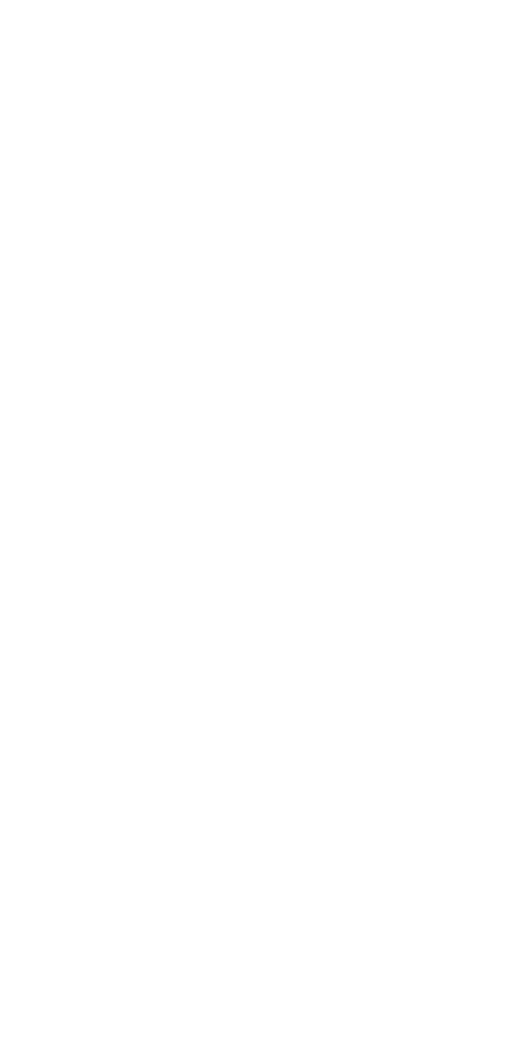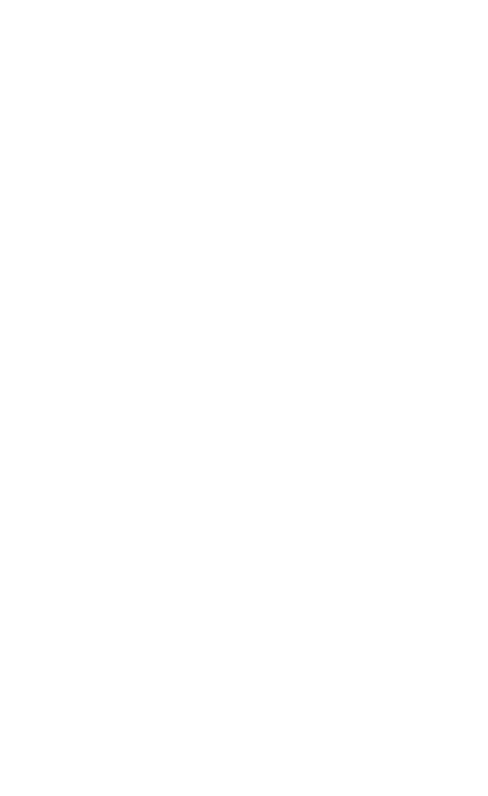
CFA Level 1 (2009) - 1
.pdf
Study Session 2 Cross-Reference to <;:FA Institute Assigned Reading #7 - Statistical Concepts and Market Returns
CONCEPT CHECKERS
1.The intervals in a frequency distribution should always have which of the following characteristics? The intervals should always:
A.be truncated.
B.be open ended.
C. be nonoverlapping.
Use the following frequency distribution for Questions 2 through 4.
Return, R |
Frequency |
|
|
-10% up to 0% |
3 |
0% up to 10% |
7 |
10% up to 20% |
3 |
20% up to 30% |
2 |
The number of intervals in this frequency table is:
A.1.
B.5.
C. 16.
3.The sample size is:
A.1.
B.5. C. 16.
4.The relative frequency of the second interval is:
A.10.0%.
B.16.0%. C. 43.8%.
Use the following data to answer Questions 5 through 13.
XVZ Corp. Annual Stock Prices
2003 |
2004 |
2005 |
2006 |
2007 |
2008 |
22% |
5% |
-7% |
|
|
11 % |
|
|
|
|
|
|
5.What is the arithmetic mean return for XYZ srock?
A.7.3%.
B.8.0%.
C.11.0%.
6.What is the median return for XYZ srock?
A.7.3%.
B.8.0%.
C.11.0%.
©2008 Kaplan Schweser |
Page 181 |

Study Session 2
Cross-Reference to CFA Institute Assigned Reading #7 - Statistical Concepts and Market Returns
7.What is the mode of the returns for XYZ stock?
A.7.3%.
B.8.0%.
C.11.0%.
8.What is the range for XYZ stock returns?
A.11.0%.
B.22.0%.
C.29.0%.
9.What is the mean absolute deviation for XYZ stock returns?
A.5.20%.
B.7.33%.
C.29.0%.
10.Assuming that the distribution ofXYZ stock returns is a population, what is the population variance?
A.6.8%2.
B.7.7%2.
C.80.2%2.
11.Assuming that the distribution ofXYZ srock returns is a population, what is the population standard deviation?
A.5.02%.
B.8.96%.
C.46.22%.
12.Assuming that the distribution ofXYZ stock returns is a sample, the sample variance is closest to:
A.5.0%2.
B.72.4%2.
C.96.3°#.
13.Assuming that the distribution ofXYZ stock returns is a sample, what is the sample standard deviation?
A.9.8%.
B.72.4%.
C.96.3%.
14.For a skewed distribution, what is the minimum percentage of the observations that will lie between ±2.5 standard deviations of the mean based on Chebyshev's Inequality?
A.56%.
B.75%.
C.84%.
Page 182 |
©2008 Kaplan Schweser |

Study Session 2
Cross-Reference to CFA Institute Assigned Reading #7 - Statistical Concepts and Market Returns
Use the following data to answer Questions 15 and 16.
The annual returns for FJW's common stock over the years 2003,2004,2005, and 2006 were 15%, 19%, -8%, and 14%.
15.What is the arithmetic mean rerum for FJW's common srock?
A.10.00%.
B.14.00%.
C.15.25%.
16.What is the geometric mean return for FJW's common srock?
A.9.45%.
B.14.21%.
C.It cannot be determined because the 2005 return is negative.
17.A distribution of returns that has a greater percentage of small deviations from the mean and a greater percentage of extremely large deviations from the mean compared ro a normal distribution:
A.is positively skewed.
B.has positive excess kurtosis.
C.has negative excess kurtosis.
18. |
Which of the following is most accurate regarding a distribution of returns that has |
|
a mean greater than its median? |
A.It is positively skewed.
B.It is a symmetric distribution.
C.It has positive excess kurtosis.
19.The harmonic mean of 3, 4, and 5 is:
A.3.74.
B.3.83.
C.4.12.
©2008 Kaplan Schweser |
Page 183 |

Study Session 2
Cross-Reference to CFA Institute Assigned Reading #7 - Statistical Concepts and Market Returns
COMPREHENSIVE PROBLEMS
1.Year-end prices and dividends for Nopat Mutual Fund for each of six years are listed below along with the actual yield (return) on a money market fund called Emfund.
|
Year |
Nopat Fund |
Nopat Fund Year- |
NopatAnnuaffioLding |
Emfimd Return |
|
|
Year-End Price |
End Dividend |
Period Return |
for the Year |
||
|
|
|||||
|
|
|
|
|
|
|
1999 |
$28.50 |
$0.14 |
|
3.00% |
|
|
2000 |
$26.80 |
$0.15 |
|
4.00% |
|
|
2001 |
$29.60 |
$0.17 |
|
4.30% |
|
|
2002 |
$31.40 |
$0.17 |
|
5.00% |
|
|
2003 |
534. 'iO |
$0.19 |
|
Lj.10o,,, |
||
2004 |
$,')7.25 |
$0.22 |
|
("00",, |
|
|
|
|
|
|
|
|
|
Average risk-free rate over the five years 2000 - 2004 is 2.8%. Risk-free rate for
1999 is 2.8%.
A.Calculate the annual holding period returns for a beginning-of-year investment in Nopat fund for each of the five years over the period 2000-2004 (% with two decimal places).
B.What is the arithmetic mean annual total return on an investment in Nopat fund shares (dividends reinvested) over the period 2000-2004?
c. What is the average compound annual rate of return on an investment in Nopat fund made at year end 1999 if it were held (dividends reinvested) until the end of 2004?
D.What is the median annual return on an Emfund investment over the 6-year period I999-2004?
E.What is the sample standard deviation of the annual returns on money market funds over the 6-year period, using the Emfund returns as a sample?
F.What is the holding period return on a 6-year investment in Emfund made at the beginning of 1999?
G. |
If an investor bought $10,000 of Nopat Fund shares at the end of the year |
|
in each of the three years 2002-2004, what is the average price paid per |
|
share? What is the arithmetic mean of the three year-end prices? |
H.What would have been the I-year holding period return on a portfolio that had $60,000 invested in Nopat Fund and $40,000 invested in Emfund as of the beginning of 2004?
Page 184 |
©2008 Kaplan Schweser |

Study Session 2 Cross-Reference to CFA Institute Assigned Reading #7 - Statistical Concepts and Market Returns
1.What is the coefficient of variation of the Nopat Fund annual total returns 2000-2004 and of the Emfund annual returns for the six years 1999-2004? Which is riskier?
J.What is the Sharpe ratio for an investment in the Nopat Fund over the five years from 2000-2004? What is the Sharpe ratio for an investment in the Emfund over the six years 1999-2004? Which Sharpe ratio is more preferred?
K.Calculate the range and mean absolute deviation of returns for an investment in the Emfund over the 6-year period 1999-2004.
L. What is the annual growth rate of dividends on Nopat Fund over the period from 1999-2004?
2.Identify the type of scale for each of the following:
A. C.us ranked as heavy, medium, or light.
B.Birds divided into categories of songbirds, birds of prey, scavengers, and game birds.
C.The height of each player on a baseball team.
D.The average temperature on 20 successive days in January in Chicago.
E. Interest rates on T-biJJs each year for 60 years.
3.Explain the difference between descriptive and inferential st:ttistics.
4.An analyst has estimated the following parameters for the annual returns distributions for four portfolios:
Portfolio |
Mean Retltrn |
Variance of |
Skewness |
Kurtosis |
|
E(R) |
returns |
||||
|
|
|
|||
Portfolio A |
lO°Ic) |
625 |
1.8 |
0 |
|
Portfolio B |
14% |
900 |
0.0 |
3 |
|
Portfolio C |
16% |
1250 |
-0.85 |
5 |
|
Portfolio 0 |
19% |
2000 |
1.4 |
2 |
|
|
|
|
|
|
She has been asked to evaluate the portfolios' risk and return characteristics.
Assume that a risk-free investment will earn 5°/"(,.
A.Which portfolio would be preferred based on the Sharpe performance measure?
B.Which portfolio would be the most preferred based on the coefficient of variation?
C.Which portfolio(s) is/are symmetric?
©2008 Kaplan Schweser |
Page 185 |

Study Session 2
Cross-Reference to CFA Institute Assigned Reading #7 - Statistical Concepts and Market Returns
D. Which portfolio(s) has/have fatter tails than a normal distribution?
E. Which portfolio is the riskiest based on its skewness?
F. Which portfolio is the riskiest based on its kurtosis?
5.Which measure of central tendency is most affected by including rare but very large positive values?
6.A manager is responsible for managing part of an institutional portfolio to mimic the returns on the S&P 500 stock index. He is evaluated based on his ability to exactly match the returns on the index. His portfolio holds 200 stocks but has exactly the same dividend yield as the S&P 500 portfolio. Which of the statistical measures from this review would be an appropriate measure of his performance and how would you use it?
7.Below are the returns on 20 industry groups of stocks over the past year:
12%, -.1%,18%,9%), -5%,21%,2%. DOlo, 28%, -14%,
31 %,32%, 5%,22%, -28%, 7%, 9%, 12%, -17%, 6%
A.What is the return on the industry group with the lowest rate of return in the tOP quartile?
B. What is the 40th percentile of this array of data?
c. What is the range of the data?
D.Based on a frequency distribution with 12 intervals, what is the relative frequency and cumulative relative frequency of the 10th interval (ascending order)?
Page 186 |
©2008 Kaplan Schweser |

Study Session 2 Cross-Reference to CPA Institute Assigned Reading #7 - Statistical Concepts and Market Returns
ANSWERS - CONCEPT CHECKERS
I.C Intervals within a frequency distribution should always be nonoverlapping and closed ended so that each data value can be placed into only one interval. Intervals have no set width and should be set at a width so that data is adequately summarized without losing val uable characteristics.
') B An interval is the set of return values that an observation falls within. Simply count the return intervals on the table-there are five of them.
3. C The sample size is the sum of all of the frequencies in the distribution, or 3 + 7 + 3 + 2 + 1
= 16.
4.C The relative frequency is found by dividing the frequency of the interval by the total number of frequencies.
7
-=43.8%
16
'i. A [22% + 5% + -7% + 11%, + 20,0 +ll%J / G = 7.3%
(" B To find the median, rank rhe returns in order and take the middle value: -7%, 2%. 5'Yo.
II %, II %, 22%. In this case, because: there is an even number of observations, the median is the average of the tWO middle values, or (5% + 11 %) / 2 = 8.0%.
7 C The mode is the value that appears most often, or 11 %.
8.C The range is calculated by taking the highest value minus the lowest value.
22% - (-7%) = 29.0%
9.B The mean absolute deviation is found by taking the mean of the absolute values of the deviations from the mean.
(122 -7.31 + 15 -7.31 + 1-7 -7.31 + 11 1 -7.3] + 12 -7.3/ + III -7.31) /6 = 7.33%
10. C The population variance, cr 2, is found by taking the mean of all squared deviations from the mean.
IT 2 = [(22 - 7.3)2 + (5 - 7 ..'W + (-7 - 7.3)2 + (II - 7.3)2 + (2 - 7.3)2 + (II - 7.3)2J /6 =
80.2%2
I 1. B The population standard deviation, cr, is found by taking the square root of the population vanance.
|
(j = {[(22 - |
7.3)2 + (5 - 7.3)2 + (-7 - |
7.3)2 + (11 - |
7.3)2 + (2 - |
7.3)2 + (11 |
- |
7.3)2] /6I Y' |
|
|
|
= (80.2%2)0.5 |
|
|
|
|
|
|
|
|
= 8.96% |
|
|
|
|
|
|
12. C |
The sample variance, s2, uses n - |
1 in the denominator. |
|
|
|
|||
|
S 2 = [(22 - |
7.3)2 + (5 -7.3)2 + (-7 - |
7.3)2 + (11 - |
7.3)2 + (2 - |
7.3)2 + (II |
- |
7.3)2] / |
|
|
(6 - I) = 96.3%2 |
|
|
|
|
|
|
|
13. A |
The sample standard deviation, s, |
is the square root of the sample variance. |
|
|
||||
|
s = {[(22 - |
7.3)2 + (5 -7.3)2 + (-7 - |
7.3)2 + (II - |
7.3)2 + (2 - |
7.3)2 + (II - |
7.3)2J / |
||
|
(6 - I)}O.5 = |
(96.3)°·5 = 9.8% |
|
|
|
|
|
|
©2008 Kaplan Schweser |
Page 187 |

Study Session 2
Cross-Reference to CFA Institute Assigned Reading #7 - Statistical Concepts and Market Returns
14.C Applying Chebyshev's inequality, 1 - [I / (2.5)2] = 0.84, or 84%.
15.A (15% + 19% + (-8%) + 14%) / 4 = 10%
16.A (1.15 x 1.19 x 0.92 x 1.14)°·25 - 1= 9.45%
~Professor's Note: This question could have been answered very quickly since the geometric
~mean must be less than the arithmetic mean computed in the preceding problem.
17.B A distribution that has a greater percentage of small deviations from the mean and a greater percentage of extremely large deviations from the mean will be leprokurtic and will exhibit excess kurtosis (positive). The distribution will be more peaked and have fatter tails than a normal distribution.
18.A A distribution with a mean greater than its median is positively skewed, or skewed ro the right. The skew "pulls" the mean. Note: Kurtosis deals with the olJeml/ shape ofa distribution
|
and I/U! itJ S!'{'/{'IlI'SS. |
|
||||
19. B |
- |
= |
|
:1 |
|
=) 8'\ |
X'i |
1 |
1 |
1 |
|||
|
, |
|
-" |
|||
"3 + /4 + /5
ANSWERS - COMPREHENSIVE PROBLEMS
I.A. The annual holding period returns (rotal returns) are given in the cable and are each calculated as (year-end price + year-end dividend)/previous year-end price - 1.
|
Nopa! Fund |
Nopat Fund |
Nopat Annual |
Emfimd Return .for |
|
Year |
Year-End |
Year-End |
Holding Period |
||
the Year |
|||||
|
Price |
Dividend |
Return |
||
|
|
||||
|
$28.50 |
$0.14 |
|
3.00% |
|
1999 |
|
||||
2000 |
$26.80 |
$0.15 |
-5.44% |
4.00% |
|
2001 |
$29.60 |
$0.17 |
11.08% |
4.30% |
|
2002 |
$31.40 |
$0.17 |
6.66% |
5.00% |
|
2003 |
$34.50 |
$0.19 |
10.48% |
4.10% |
|
2004 |
$37.25 |
$0.22 |
8.61% |
6.00% |
|
|
|
|
|
|
B.The arithmetic mean of the holding period returns is 6.28%.
c. ((I - 0.0544)(1.1108)(1.0666)(1.1048)(1.0861))1/5 - 1 = 6.10%
D.Median = (4.3 + 4.1) / 2 = 4.2%.
E.Sample standard deviation of Emfund returns over the six years is:
l[(3 - 4.4)2 + (4 - 4.4)2 + (4.3 - 4.4)2 + (5 - 4.4)2 + (4.1 - 4.4)2 + (6 - 4.4)2] / 51 1/2
5.14)Yz =
= (-5- 1.01%
Page 188 |
©2008 Kaplan Schweser |

Study Session 2
Cross-Reference. to CFA Institute Assigned Reading #7 - Statistical Concepts and Market Returns
F.(1.03)(1.04)(1.043)(1.05)(1.041)(1.06) - 1 = 29.45%
G. |
The harmonic mean is 3/(1/31.4 + 1/34.5 + 1/37.25) = $34.22 average purchase price |
|
per share. Arithmetic mean price = (31.4 + 34.5 + 37.25)/ 3 = $34.38. |
H. |
The portfolio return is a weighted average, 0.6 x 8.61 % + 0.4 x 6% = 7.57%. |
1.CV for Nopat = 6.77/6.28 = 1.08. CY for Emfund = Ull/4.4 = 0.23. Emfund is less risky hy this measure.
J.Sharpe ratio for Nopat is (6.28 - 2.8)/ 6.77 = 0.51. Sharpe measure for Emfund is (4.4 - 2.8) / 1.01 = 1.58. The Emfund is preferred using this criterion because it has
higher excess returns per unit of risk.
K.Range is 6% - 3% = 3%. MAD is 0.73% = [(4.4% - 3%) + (4.4% - 4%) +(4.4%- 4.3%) +(5% - 4.4%) +(4.4% - 4.1 %) +(6% - 4.4%)J /6. Remember to use absolute values; we show all differences as positive to reflecc thac.
1..Avnagc annual growch rate of dividends is the geometrir mean race of growth:
(0.22/0.14)1/'; - I = 9.46%.
2.A. An ordinal scale.
B.A nominal sC<lle.
C.A racio scale.
D.An incerval scale.
E.A ratio scale.
3. |
Descripcive statistics are used to summarize the important characteristics of large data sets |
|
to consolidate a mass of numerical data into useful information. Inferential statistics refers |
co using statistics to make forecasts, estimates, or judgments about a large set of data on the basis of the statistical characteristics of a smaller set (a sample).
19-5
4.A. Portfolio D has the highest Sharpe ratio, .J2000 = 0.31.1 and is therefore the most preferred.
B. Portfolio B has the lowest coefficient of variation, |
J900 = 2.1429 and is therefore the |
most preferred. |
14 |
C.Portfolio B has no skew and is therefore a symmetric distribution (about its mean of 14%).
D.The kurtosis of a normal discribution is 3, so only portfolio C has positive excess kurtosis, indicating fatter cails (and more peakedness) relative to a normal distribution.
E.Negacive skew indicaces that returns below the mean are more extreme; so we would consider Portfolio C to be the most risky based on skew alone.
F.Larger kurtosis indicates greater likelihood of extreme outcomes and from a riskmanagement standpoint this indicates greater risk. Portfolio C has the greatest kurtosis.
©2008 Kaplan Schweser |
Page 189 |

Scudy Session 2
Cross-Reference to CFA Institute Assigned Reading #7 - Statistical Concepts and Market Returns
5.The mean is most affected by large outliers in a distribution, compared to the median and mode, which may be unaffected.
6.Since the goal is to match the index reCUrns, we must focus on the differences between the returns on the manager's portfolio and those on the index he is attempting to mimic. These differences are referred to as "tracking error.» The standard deviation or variance of
the differences between his portfolio recurns and the returns of the index over a number of periods would be a suitable measure of his performance. If you said mean absolute deviation, that is defensible as well as it is certainly one way to measure tracking error. It is, however, not the measure of tracking error we see used in practice.
7.A. With 20 datapoints, the top quartile ('A) is the top 5. Count down from the greatest value to find the 5th from the top is 21 %.
B.The location of the 40th percentile is (20 + 1) (401100) = 8.4. The 8th and 9th lowest returns are 6% and 7%, so the 40th percentile is 6 + 0.4(7 - 6) = 6.4%.
C. The range of the data is 32 - (-28) = 60.
D.Divide the range [w [2 ro gel 5. The 10th interval from the bonom is the 3rd from thl' lOp. The top three intervals arc 27::'; x S; 32,22:::; x < 27, and 17 S; x < 22. There are
only two observations in the] Oth intcrval, ] 8% and 21 %. The relative frequency is 2120 = 10%. Since there are four observations ~ 22%, the cumulative relative frequency of the 10th interval is (20 - 4 )/20 = 80%.
Page 190 |
©2008 Kaplan Schweser |
